
70% of the population was covered through integrated services.

96% participants graduated out of ultra-poverty.

Income-generating activities improve economic conditions of 52% households’

Improving the socioeconomic conditions of 1 million people living in poverty by 2020

Delivering essential services to support poverty reduction and climate resilience
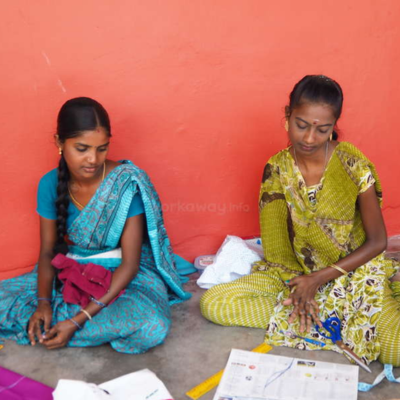
Protecting and promoting indigenous cultures, building leadership capacity and advocating for indigenous peoples’ issues

Supporting the communities in the areas surrounding the gas fields in the greater Sylhet region through building leadership capacity and value chain development
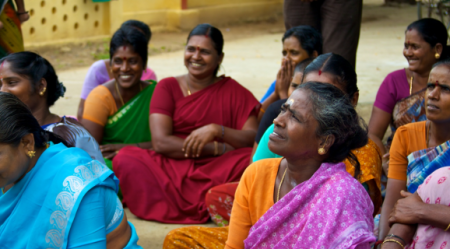
Providing needs-based support and services following careful analysis of each community

Ensure people can access all healthcare services including supplementary nutrition for mothers and children, mental health support, sexual and reproductive care through the healthcare centres.
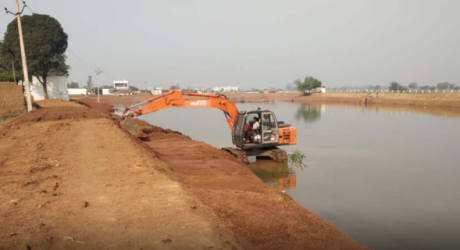
Install safe water sources, inclusive sanitation facilities, managing waste and raise awareness on hygiene practices.
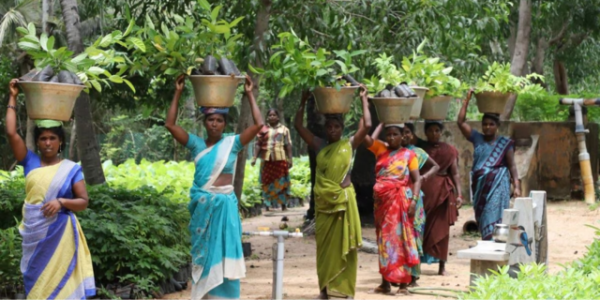
Equip people with skills and knowledge to create alternative livelihood such as homestead gardening, aquaculture and livestock interventions, cash for work ect.
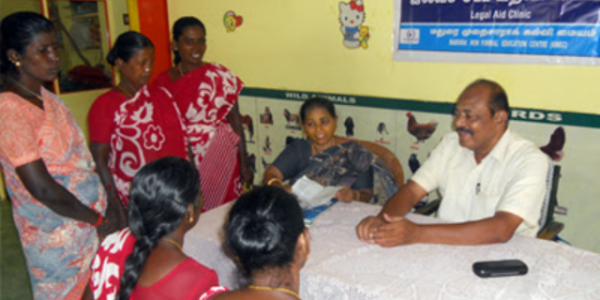
Ensure people have access to right information and legal assistance to identify and address protection issues such as gender-based violence, trafficking and harmful behaviours.

Coordinate with relevant stakeholders to identify most vulnerable areas to plan safe and climate resilient infrastructure.

Ensuring women's participation in decision making and representation in power structure process

Providing quality education, essential healthcare, legal aid support and improved water and sanitation practices

Promoting agricultural farming, disaster preparedness, livelihood security, access to finance and micro-enterprise as means of income

Knowledge management and dissemination with relevant actors and the government of Bangladesh

Providing needs-based support and services following careful analysis of each community

Trained persons ensure a holistic approach that delivers a comprehensive set of services

Serving the most marginalised communities that otherwise have no access to basic services





Mr Sriram is an experienced professional with over 32+ years of experience in the field, 20+ years focused on building partner ecosystems for industrial solutions that span both IT and Non-IT areas. His expertise includes Experience in Strategy, Sales, Project Management, Product Management and Operations. He has also gained valuable knowledge from working on Commercial Application development projects and B2B, Healthcare, Transportation, Processes Industry, and Quality Control Projects.
His expertise extends beyond just his technical knowledge and into customer relations, where he excels at creating robust partnerships between clients and vendors to ensure mutual success across all parties involved. Mr Sriram’s ability to understand complex problems quickly allows him to develop innovative strategies that lead businesses towards achieving their goals efficiently while maintaining high customer satisfaction standards throughout the process.
His impressive track record makes him a great asset to Shield Group & ATRIBS, where he currently serves as one of its founders & directors. He brings a wealth of knowledge that can help the company reach new heights by leveraging his deep understanding of developing innovative business strategies across multiple industries, such as healthcare, transportation, retail, payment, or process management. In addition, his vast network within these fields enables Shield Group & ATRIBS to tap into potential partnerships or collaborations that could benefit them greatly regarding their growth prospects.
His ability to think outside the box while still maintaining practicality makes him stand out amongst other professionals allowing companies like Shield Group & ATRIBS to benefit from his skillsets significantly.
His business acumen and strong technical skills make him an invaluable asset within Shield Group & ATRIBS. He can help drive growth through strategic planning while keeping customers happy by providing outstanding service at each step

Mr Sriram is an experienced professional with over 32+ years of experience in the field, 20+ years focused on building partner ecosystems for industrial solutions that span both IT and Non-IT areas. His expertise includes Experience in Strategy, Sales, Project Management, Product Management and Operations. He has also gained valuable knowledge from working on Commercial Application development projects and B2B, Healthcare, Transportation, Processes Industry, and Quality Control Projects.
His expertise extends beyond just his technical knowledge and into customer relations, where he excels at creating robust partnerships between clients and vendors to ensure mutual success across all parties involved. Mr Sriram’s ability to understand complex problems quickly allows him to develop innovative strategies that lead businesses towards achieving their goals efficiently while maintaining high customer satisfaction standards throughout the process.
His impressive track record makes him a great asset to Shield Group & ATRIBS, where he currently serves as one of its founders & directors. He brings a wealth of knowledge that can help the company reach new heights by leveraging his deep understanding of developing innovative business strategies across multiple industries, such as healthcare, transportation, retail, payment, or process management. In addition, his vast network within these fields enables Shield Group & ATRIBS to tap into potential partnerships or collaborations that could benefit them greatly regarding their growth prospects.
His ability to think outside the box while still maintaining practicality makes him stand out amongst other professionals allowing companies like Shield Group & ATRIBS to benefit from his skillsets significantly.
His business acumen and strong technical skills make him an invaluable asset within Shield Group & ATRIBS. He can help drive growth through strategic planning while keeping customers happy by providing outstanding service at each step

Mr Sriram is an experienced professional with over 32+ years of experience in the field, 20+ years focused on building partner ecosystems for industrial solutions that span both IT and Non-IT areas. His expertise includes Experience in Strategy, Sales, Project Management, Product Management and Operations. He has also gained valuable knowledge from working on Commercial Application development projects and B2B, Healthcare, Transportation, Processes Industry, and Quality Control Projects.
His expertise extends beyond just his technical knowledge and into customer relations, where he excels at creating robust partnerships between clients and vendors to ensure mutual success across all parties involved. Mr Sriram’s ability to understand complex problems quickly allows him to develop innovative strategies that lead businesses towards achieving their goals efficiently while maintaining high customer satisfaction standards throughout the process.
His impressive track record makes him a great asset to Shield Group & ATRIBS, where he currently serves as one of its founders & directors. He brings a wealth of knowledge that can help the company reach new heights by leveraging his deep understanding of developing innovative business strategies across multiple industries, such as healthcare, transportation, retail, payment, or process management. In addition, his vast network within these fields enables Shield Group & ATRIBS to tap into potential partnerships or collaborations that could benefit them greatly regarding their growth prospects.
His ability to think outside the box while still maintaining practicality makes him stand out amongst other professionals allowing companies like Shield Group & ATRIBS to benefit from his skillsets significantly.
His business acumen and strong technical skills make him an invaluable asset within Shield Group & ATRIBS. He can help drive growth through strategic planning while keeping customers happy by providing outstanding service at each step

Mr Sriram is an experienced professional with over 32+ years of experience in the field, 20+ years focused on building partner ecosystems for industrial solutions that span both IT and Non-IT areas. His expertise includes Experience in Strategy, Sales, Project Management, Product Management and Operations. He has also gained valuable knowledge from working on Commercial Application development projects and B2B, Healthcare, Transportation, Processes Industry, and Quality Control Projects.
His expertise extends beyond just his technical knowledge and into customer relations, where he excels at creating robust partnerships between clients and vendors to ensure mutual success across all parties involved. Mr Sriram’s ability to understand complex problems quickly allows him to develop innovative strategies that lead businesses towards achieving their goals efficiently while maintaining high customer satisfaction standards throughout the process.
His impressive track record makes him a great asset to Shield Group & ATRIBS, where he currently serves as one of its founders & directors. He brings a wealth of knowledge that can help the company reach new heights by leveraging his deep understanding of developing innovative business strategies across multiple industries, such as healthcare, transportation, retail, payment, or process management. In addition, his vast network within these fields enables Shield Group & ATRIBS to tap into potential partnerships or collaborations that could benefit them greatly regarding their growth prospects.
His ability to think outside the box while still maintaining practicality makes him stand out amongst other professionals allowing companies like Shield Group & ATRIBS to benefit from his skillsets significantly.
His business acumen and strong technical skills make him an invaluable asset within Shield Group & ATRIBS. He can help drive growth through strategic planning while keeping customers happy by providing outstanding service at each step

A Visionary with a driven personality, not only highly analytical and strategic but also creative and hands-on in nature
· Held executive leadership role for Startups, SMEs, SMBs, Corporates.
· Proven experience and success across all disciplines of Solution Sales & Business expansion (product, branding, strategy, social media & Digital communications )
· Demonstrable experience in positioning a company in a competitive market and winning market share;
· Experience in both transactional and enterprise go-to-market models;
· ROI-driven approach to marketing and strong attention to detail;
· Clear, effective communication skills and experience in a collaborative, transparent, and hands-on environment;
·Have an Affinity towards Service and has given back to Society from his School Days by Volunteering and engaging in NSS Camps, Blood Donations, Book Offerings , Chennai Floods, COVID HELP
.Volunteer & Mentor in Project Puthri & MITR NGO
.Cloth & Food Donor for the SAVE THE CHILDREN, Organization
. Advisor on Technology to Many NGOs and Non-Profit enhancing their working Standards.
Good Eye for design and creative assets

A Visionary with a driven personality, not only highly analytical and strategic but also creative and hands-on in nature
· Held executive leadership role for Startups, SMEs, SMBs, Corporates.
· Proven experience and success across all disciplines of Solution Sales & Business expansion (product, branding, strategy, social media & Digital communications )
· Demonstrable experience in positioning a company in a competitive market and winning market share;
· Experience in both transactional and enterprise go-to-market models;
· ROI-driven approach to marketing and strong attention to detail;
· Clear, effective communication skills and experience in a collaborative, transparent, and hands-on environment;
·Have an Affinity towards Service and has given back to Society from his School Days by Volunteering and engaging in NSS Camps, Blood Donations, Book Offerings , Chennai Floods, COVID HELP
.Volunteer & Mentor in Project Puthri & MITR NGO
.Cloth & Food Donor for the SAVE THE CHILDREN, Organization
. Advisor on Technology to Many NGOs and Non-Profit enhancing their working Standards.
Good Eye for design and creative assets

Music Composer/ Event Organiser & Manager/Band Leader/ Producer/ Media Person/S.Sankar Ram
Music Composer/ Event Organiser & Manager/Band Leader/ Producer/ Media Person/Research scholar for OTT music Education
” Isai kalaimani” award holder
* Successfully conducted 8000 mega musical shows across world
* 2 crore viewers for his three you tube channels with 45000 views every day.
* Producer of Fiction & Non fiction series for leading satellite channels of South India.
* Successfully conducted 8000 mega musical shows across world.
* 2 crore viewers for three you tube channels with 45000 views every day.
* Producer of Fiction & Non fiction series for leading satellite channels of South India.
Achievements:
Saadhagaparavaigal has quite a few firsts to its credit, namely.

A Naturopath former student from JSS Institute of Naturopathy & Yogic sciences with Masters in Classical Acupuncture, Trained in Yoga, Pranayama & Meditation, Cupping Therapy, Massage therapy, Chromo therapy, Pranic healer, Access Consciousness energy bar Practitioner, Stress Management counsellor. Overall She is Expert in BEAUTY & WELLNESS sector. Practicing Age management & Stress Management Consultant treating clients allied with severe stress, Insomnia, Psoriasis, Obesity, High Blood pressure& Diabetic patients successfully with Alternative therapeutic Treatments & without oral Medications.
An Aesthetician who is specially trained by Ms.Christine Valmy & Ms. Marina valmy founders of Christine valmy International Beauty School, USA and launched Christine Valmy Skin care products in South India with India’s leading Chain of salons. Trained almost 5000 beauticians in Aesthetics, and has given several articles in Leading magazines, TV programs to share the awareness about hair care, skin care & nail care to the Public. Worked With REVLON as Regional Makeup Trainer.
Headed Salon @ home Department in Urban clap Technologies, Chennai and trained beauty skills along with online portal app technology and business administrative skills to the beauticians to become a MONO ENTREPRENEURS.
About Bharathi Shakthi women farmer producer organization:
Our Bharti Shakti women from a producer organisation is started in December 2021 with thousand five hundred women it is functioning in the village called karisal Patti in Madurai district and this is the first woman farmer producer organisations among 10000 FPO’s in India.
We are ensuring our farmer women are financially independent through our skills training programs like

A Zoology graduate from Gurunank College, Chennai. Served as a Secretary of Tamil Mandram of the same college groomed Him as a great Tamil orator. And his training in world famous Landmark Education made him a remarkable English orator, who gave hundreds of Motivational speeches in leading Rotary clubs, corporates ans orher social events. His participation in Leo club of park town, Youth forum of Gandian Studies, Youth club of Soviet cultural centre, Rotary Club of Madras north made him to serve thousands of people. His association with Tamilnadu Fishermen Federation made him to reach thousands of simple living people to empower them. His international trips including Singapore, Malaysia, Srilanka, Thailand and China empowered him to make a difference in people lives internationally. For living he served the people as an leading interior Decorator in chennai, had a wood working factory. His passion in acting career made him to act several Tamil Tele serials in all the leading Tamil channels. His ability in mimicry Talent attracted and created thousands of fans for him. His love in Spirituality made him a humble human being and created a trait of compassion towards all beings of this holy world.